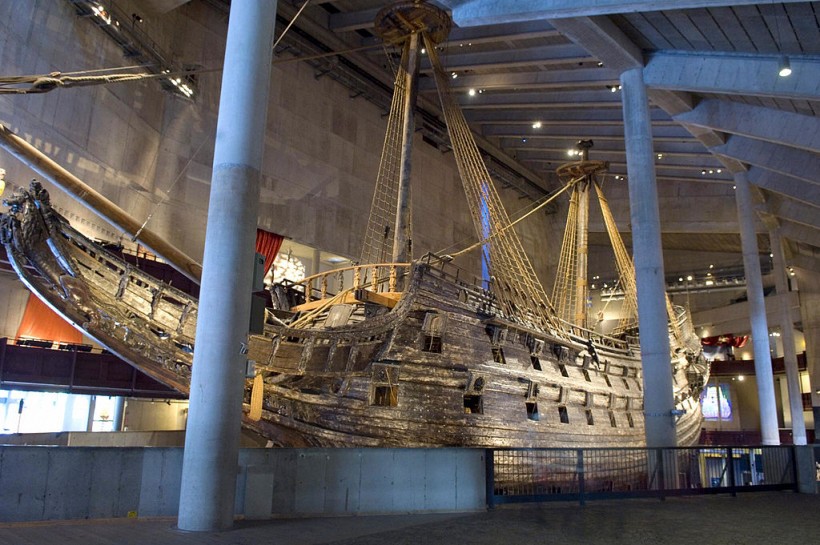After discovering two medieval shipwrecks close to Vanberg, Sweden, archaeologists were astonished by a blast from the 14th century.
The sunk commercial ships are cogs, single-masted transport ships that first emerged off the Frisian coast in the 12th century. Still, the term "cog" has been recorded as far back as the 9th century, according to a report by Heritage Daily.
The finding is all the more intriguing because it took a long time.

Stockholm, SWEDEN: Swedish 17th century royal warship Vasa lies on drydock in Stockholm August 24, 2006. The sunken ship was rediscovered nearly intact fifty years ago tomorrow, where she had capsized minutes into its maiden voyage in 1628 in Stockholm harbor. The Vasa, which lay on the seabed for 333 years until a shipwreck hunter located it on August 25, 1956, resurfaced after a five-year salvage effort and has since been visited by more than 25 million people.
A Battle of Cogs, Viking Ships in Sweden
Cogs rapidly replaced Viking-style ships on the northern rivers throughout the 13th century because they could carry more goods than Knarr of the same size. Due to their flat bottoms, they are also thought to be more stable.
Dendrochronological studies noted that the wood for one of the ships was harvested after 1346 in what is now the Netherlands, Belgium, and north-eastern France. The wood for the second ship was gathered between 1355 and 1357 in northern Poland.
Per Science Direct, dendrochronology is the name of the scientific method for pinpointing the exact year when tree rings were created.
Dendroclimatology, the study of climatic and atmospheric conditions during various historical periods from wood, may benefit from this knowledge. The team utilized this method to establish the age of the ships.
ALSO READ: 2,500-Year-Old Ancient Greek City Reemerged After Months of Extreme Drought in Turkiye
The ships' sides were built in the more traditional clinker form, while the bottom strakes were constructed in the carvel style. According to the crew, both ships were built using standard cog construction.
A closer inspection reveals that the caulking between the strakes was made from moss and then secured with lathes.
A stockpile of ship equipment and reserve components concealed behind a pile of ballast stones, a stash of leather shoes, wooden and ceramic household items, barrel lids with the manufacturer's mark still carved into them, and barrels with leather soles have also all been found during the excavations.
How Rare are Cogs?
Elisabet Schager, an archaeologist and the project manager of the excavation, said in the same Daily Heritage report that just seven additional cogs were found in Sweden before discovering these two wrecks. Only around 30 are believed to have been unearthed across all of Europe.
Additionally, the crew has collected soil samples to discover food and freight remnants and parasite remains that might tell whether animals were taken aboard the spacecraft.
The ships were built outside of Scandinavia, but the experts still needed to determine what caused them to sink.
Once every piece of wood from the wreckage has been meticulously cleaned and inspected, the crew expects to uncover the riddle.
Researchers published the study in the International Journal of Nautical Archaeology.
RELATED ARTICLE: Archaeologists Aren't Actively Searching For Atlantis; Here's Why
Check out more news and information on Archaeology in Science Times.














